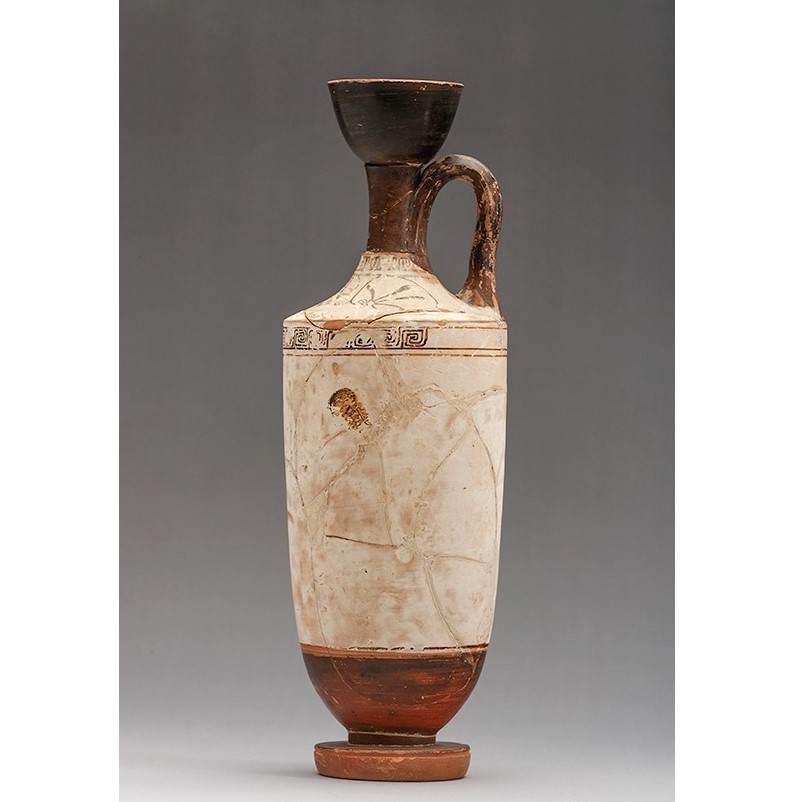
Artefact or object:
Description:
Attic White-Ground Pottery
Introduction by J.R. Green
The technique of covering the surface with a white ground over which the figure-decoration was drawn may well have been introduced in Athens in the workshop of the potter Nikosthenes in the later part of the sixth century (Williams, Jahrbuch der Berliner Museen 24, 1982, 17-40, esp. 26-27). The inspiration may well have come from East Greece. Its use was not widespread initially and it was employed on a range of shapes such as cups and even amphorae before it became more particularly associated with funerary lekythoi. See I. Wehgartner, Attisch weissgrundige Keramik (Mainz 1983); J. R. Mertens, Attic White Ground: Its Development on Shapes other than Lekythoi (New York 1977) and the same author’s “Attic White Ground: Potter and painter”, in: B. Cohen (ed.), The Colors of Clay: Special techniques in Athenian vases (Los Angeles 2006) 186–93, with items 50–69.